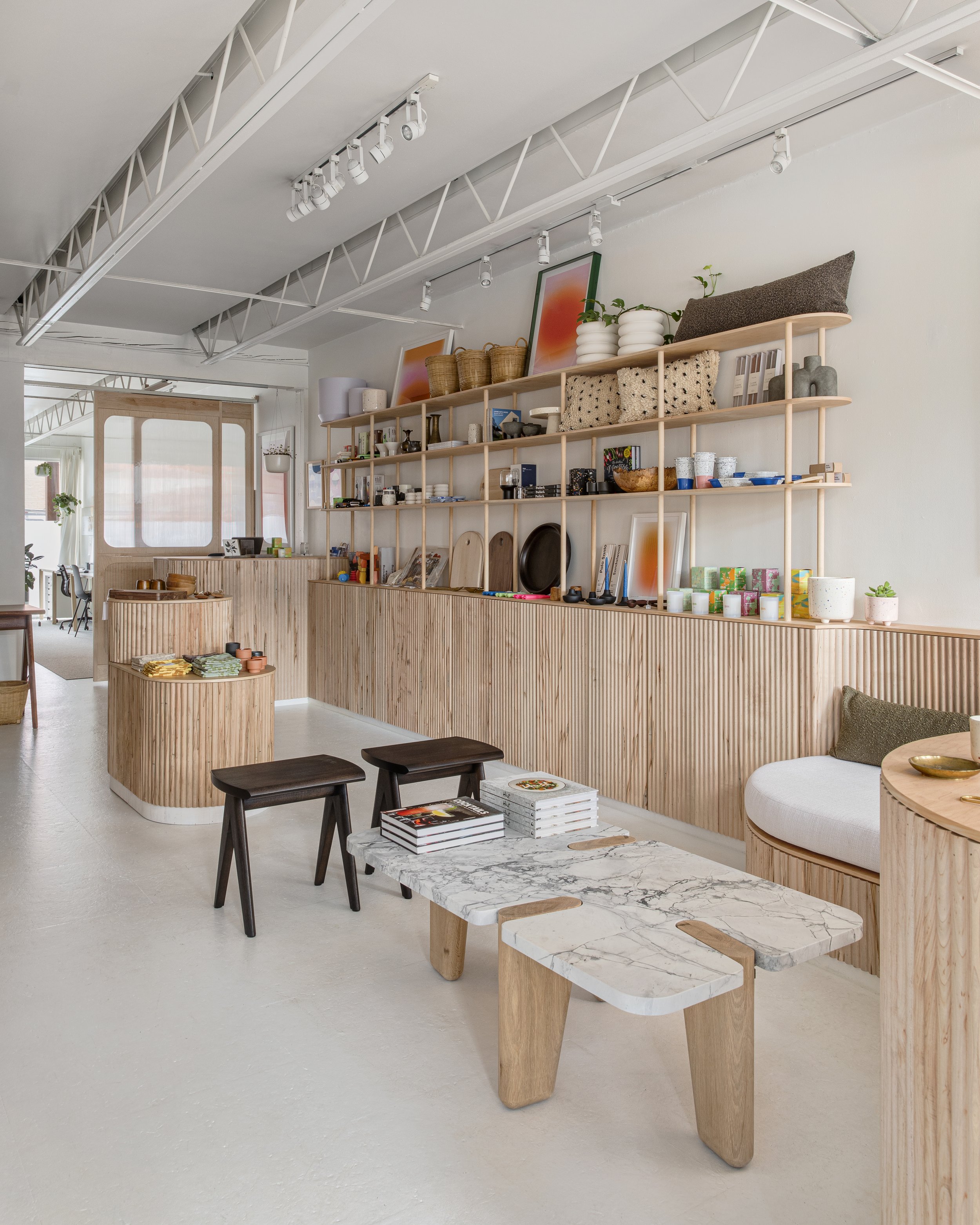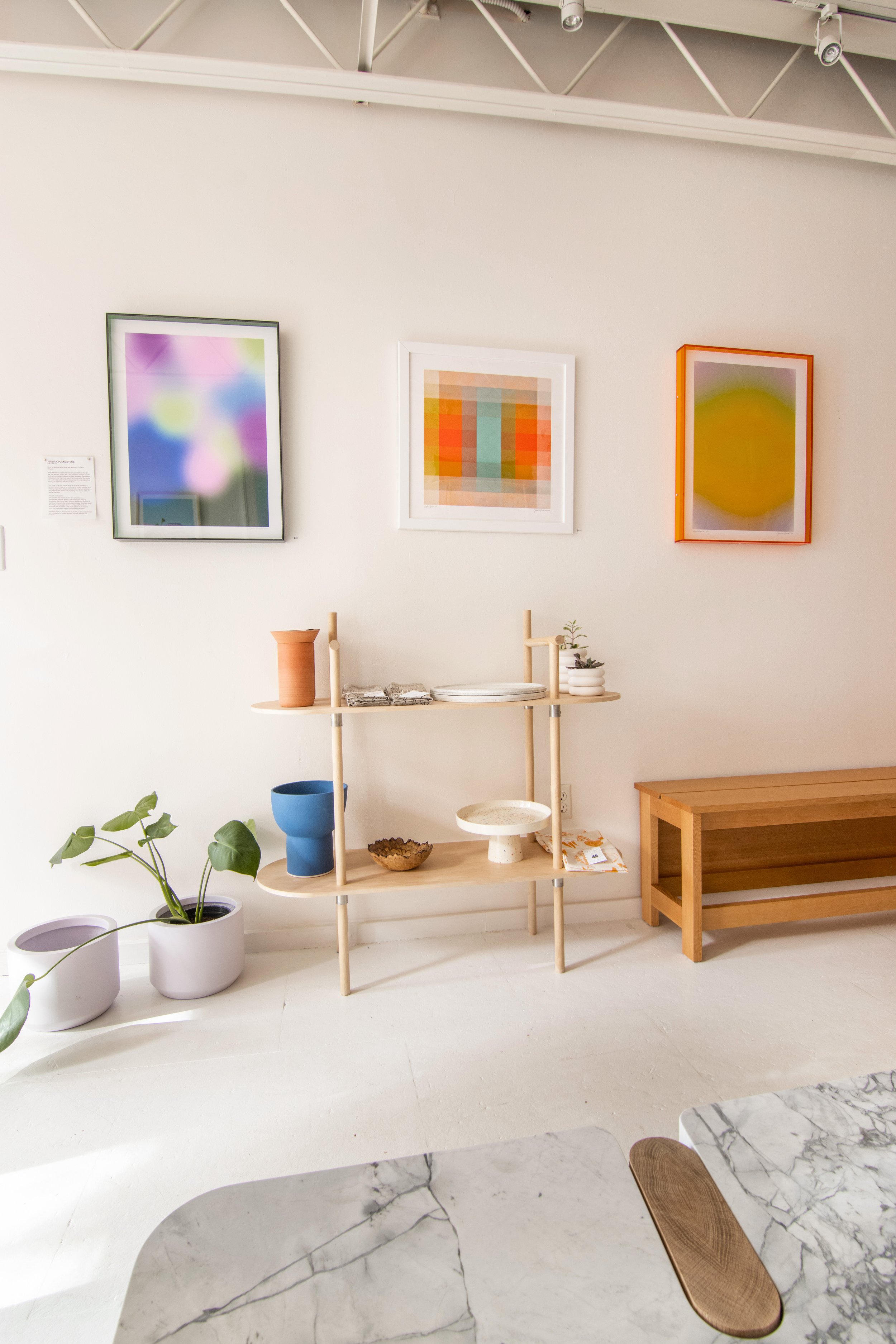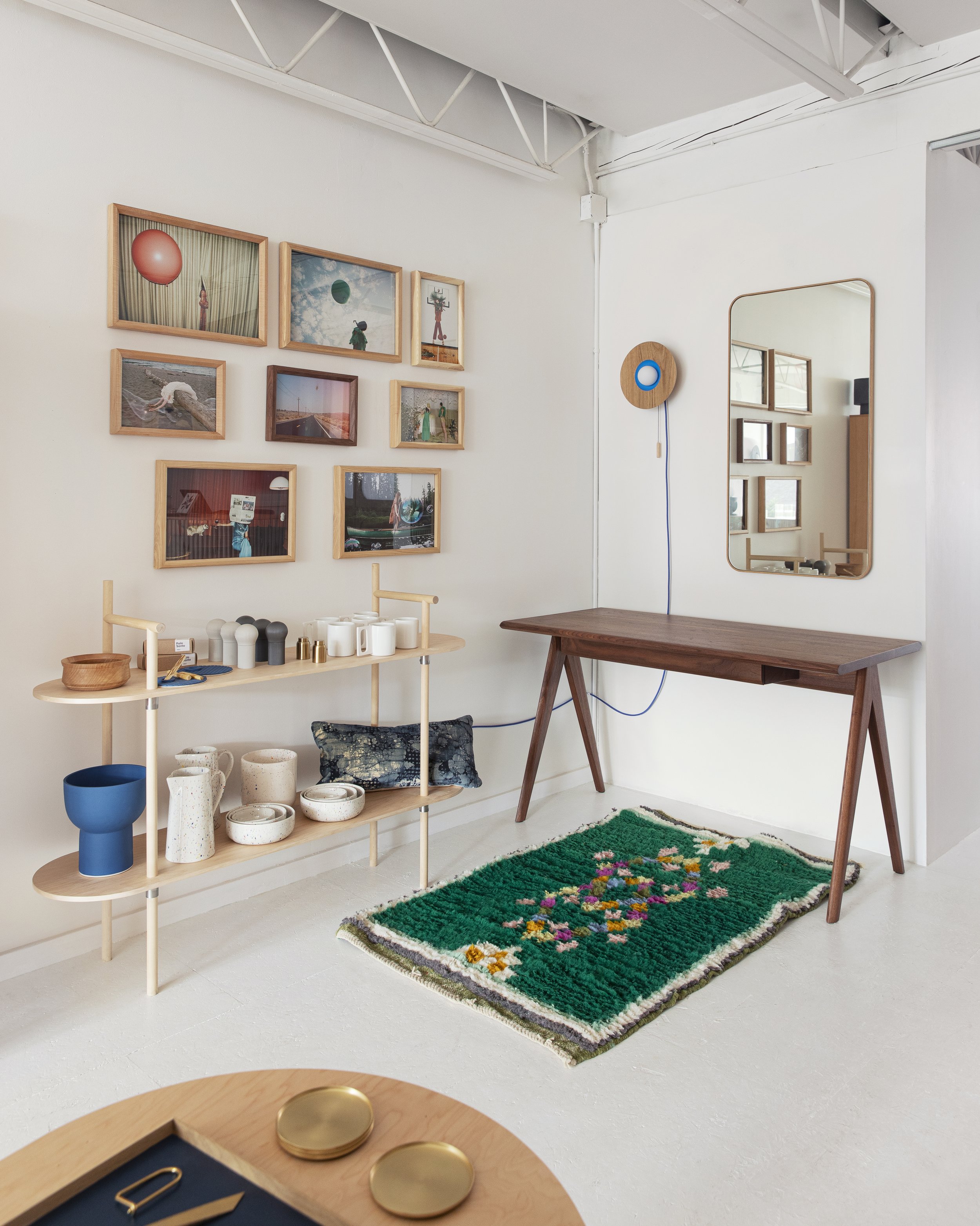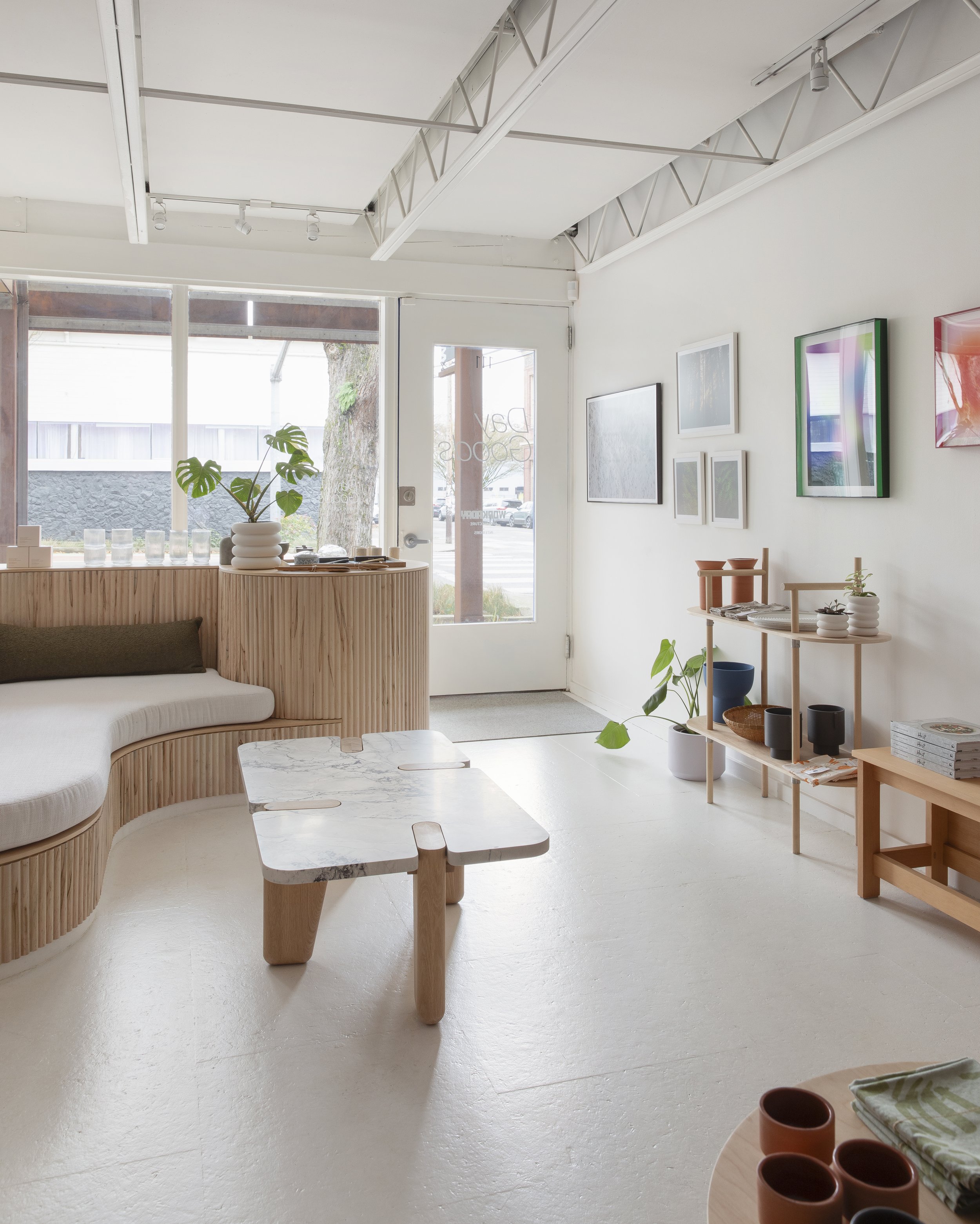Day Goods :
Discovering Day Goods: Where Minimalism Meets Vibrancy
Nestled amidst the vibrant streets of Portland lies Day Goods—a shop where minimalist design intertwines with bursts of color, creating an immersive retail experience like no other. Led by Lara White and her partner, Jason Stamp, Day Goods is more than just a store; it's a carefully curated space where every element is thoughtfully selected to evoke a sense of wonder and invitation.
From handcrafted furniture to artisanal home goods, each item tells a story—a testament to Lara and Jason’s commitment to craftsmanship and authenticity. At the heart of Day Goods lies its pièce de résistance: a customized seating area that invites shoppers to sit, unwind, and immerse themselves in the beauty of the space.
Whether you're browsing the shelves or taking a moment to pause in the beautiful space, Day Goods is a place where style meets functionality with effortless grace, offering a welcome respite from the hustle and bustle of everyday life.
Text by Annika Bielig-Bussmann Imagery courtesy by Michael Lang & Christopher Dibble
Design plays a crucial role in creating unique retail experiences. How did you approach curating your store's aesthetic to resonate with your target audience while staying true to your brand's vision? When was the idea born to create a retail brick and mortar with Day Goods?
Our guiding question when thinking about what to curate the shop with is, “What would we put in our projects and/or what would we want in our personal home / lives?”
We have always tossed around the idea of having some sort of showroom. We have a background in designing and building furniture, and after we graduated school, we thought that might be the direction we would go; however once we got into designing houses, that took over the majority of our time.
As we have started getting bigger custom homes, we have had more clients that desire custom furniture pieces, which has reignited the desire to design and build furniture again. The shop allows us an avenue to bring some of those pieces
directly to the market and keep a space for us to continue to explore our love for furniture.
As a design concept store, you likely encounter a variety of color palettes and elements. How do you incorporate diverse colors and elements into your store's displays and interior design to evoke certain emotions or themes? What is your favorite color palette and why?
We knew we wanted the shop to feel like a backdrop to the beautiful and diverse objects we would bring into space. This meant we would need to keep the palette very neutral. We decided to go with a light maple wood and paint the rest of the space white to have a more gallery feel. However we didn't want the space to feel too stark and flat; this is where the texture and curves come in.
Our favorite palettes are layered neutrals with moments of color, often colors that are in the surrounding landscape. In forested areas we will bring in more greens, desert more reds and browns and plains more blues and gold tones. We love to set up a guide, but then we also love to find those perfect moments to break the rules and have some fun.
In a world saturated with mass-produced goods, how do you source and select your items?
Fortunately Portland already has an ethos that lends itself to an abundance of incredible artists and makers, so we of course tap into that. We knew we didn't just want to do “local;” that’s already done very well by so many shops in Portland,so we wanted to bring in brands that we have used over the years when styling our projects and take the opportunity to branch out and find great new makers in places like Portugal, Canada, Australia and other cities throughout the U.S.
With the rise of online shopping, physical retail spaces must offer something unique and immersive to attract customers. How do you create an environment in your store that encourages exploration, interaction and a sense of community among visitors?
Our approach has been to create a space that feels unique to shoppers by coming at it from an interior design perspective, making it feel more like a home while also giving a backdrop for the product. This may be to our detriment, but we try to not overfill the space and allow the furniture and art to breathe.
As we approach summer, many retail stores embrace seasonal themes or refresh their displays. What is your vision for Day Goods this summer? Are there any exciting changes or new elements that customers can look forward to experiencing?
Currently we don't have any specific seasonal changes planned; however, our store is always evolving with new art, furniture or goods. I would say there is something new every few weeks, but it's a very fluid evolution.
Day Goods
Retail spaces often serve as a canvas for storytelling. How do you use elements of storytelling within your store's layout and design to engage customers and create memorable experiences?
I think our story was creating a space that has elements of feeling like a home. A retail store by no means needs a little “living room area,” and you
can argue this takes away real estate for more goods; regardless, we created the little curved seating area where people can come in and take
a seat while looking at the art or flipping through one of the books to help showcase our design side and make the shop feel more cozy.
Sustainability is becoming increasingly important in the design and retail industries. How does Day Goods prioritize sustainability in its product selection and store design, and how do you communicate this commitment to your customers?
Sustainability is something that we always try to keep in mind. For example, one of the candle companies we carry can be reused as a cup after the candle is fully used up. You can also buy the same cups empty to complete the full set. We love products that can be reused or used for multiple purposes. We try to select products that are made from sustainable materials, like the toy cars we carry. They are made from wood as opposed to plastic.
One of the key elements to sustainability is the quality and longevity of the product. We want to provide well designed and well made products that someone can enjoy forever and hopefully pass down to the next generation.









